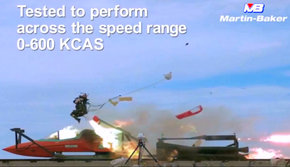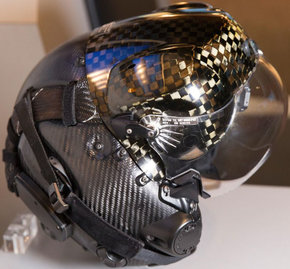SpazSinbad
Active Member
Where did you see 'the line'? Every military function has a limit if that is how it works. NOT knowing 'the line' as it is I would suggest it says more but hey I don't know 'the line'. So you say the HMDS? (or do you refer to another helmet altogether?) [you can see how this is confusing already because you did not quote 'the line' or whence it came....] is certified means testing has made it so - given probably other parameters such that the pilot height and weight must be within the limits also. Anyway a simple answer is: IF the pilot has to eject above 600 knots airspeed to save his life then he should do it. Usually NOT ejecting means CERTAIN DEATH so giving the ejection seat a chance - even when the ejection is out of certified limits - is a better option with no guaranteed outcome (being out of tested limits). NO EJECTION is guaranteed 100% safe - instrumented dummies are used in testing sequences. Real life ejections may 'test' the system however the parameters of the ejection are probably always vague except if it is a ZERO ZERO ejection.
[ USAF Acknowledges Expanded Risk of Neck Damage to F-35 Pilots ]
At very high airspeeds the potential for damage to the pilot increases A LOT with not only neck/head injuries but flail injury to arms/legs or damage to the seat causing malfunction perhaps. Many variables can work against a successful ejection so there are limits which should only be broken when there is no alternative. Screenshot from near end of video above....

[ USAF Acknowledges Expanded Risk of Neck Damage to F-35 Pilots ]
At very high airspeeds the potential for damage to the pilot increases A LOT with not only neck/head injuries but flail injury to arms/legs or damage to the seat causing malfunction perhaps. Many variables can work against a successful ejection so there are limits which should only be broken when there is no alternative. Screenshot from near end of video above....

Last edited:

